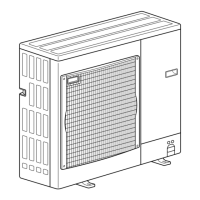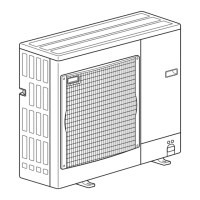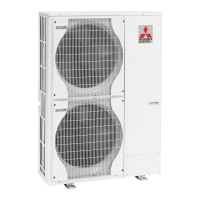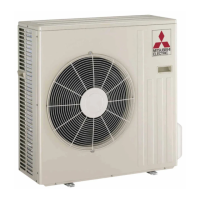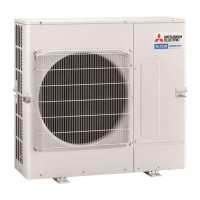SERVICE MANUAL
No.OCH415
REVISED EDITION-G
R410A
July 2013
PUHZ-P100VHA4.UK
PUHZ-P100YHA2.UK
CONTENTS
1. TECHNICAL CHANGES
................................
2
2. REFERENCE MANUAL
.................................
3
3. SAFETY PRECAUTION
.................................
3
4. FEATURES
.....................................................
7
5. SPECIFICATIONS
..........................................
8
6. DATA
.............................................................
12
7. OUTLINES AND DIMENSIONS
...................
15
8. WIRING DIAGRAM
......................................
23
9. WIRING SPECIFICATIONS
..........................
30
10.
REFRIGERANT SYSTEM DIAGRAM
..............
35
11. TROUBLESHOOTING
..................................
38
12. FUNCTION SETTING
.................................
101
13. EASY MAINTENANCE FUNCTION
...........
114
14.
MONITORING THE OPERATION DATA BY THE REMOTE CONTROLLER
..
118
15. DISASSEMBLY PROCEDURE
...................
129
PARTS CATALOG (OCB415)
Outdoor unit
[Model names]
PUHZ-P100VHA2
PUHZ-P125VHA2
PUHZ-P140VHA2
PUHZ-P100VHA3
PUHZ-P125VHA3
PUHZ-P140VHA3
PUHZ-P100VHA4
PUHZ-P100YHA
PUHZ-P100YHA2
PUHZ-P125YHA
PUHZ-P140YHA
[Service Ref.]
Refer to page 2.
Note:
• RoHS compliant products have
<G> mark on the spec name
plate.
Revision:
• PUHZ-P100YHA2R1.UK
has been added in REVISED
EDITION-G.
• Some descriptions have been
modified.
• Please void OCH415
REVISED EDITION-F.
SPLIT-TYPE, HEAT PUMP AIR CONDITIONERS


